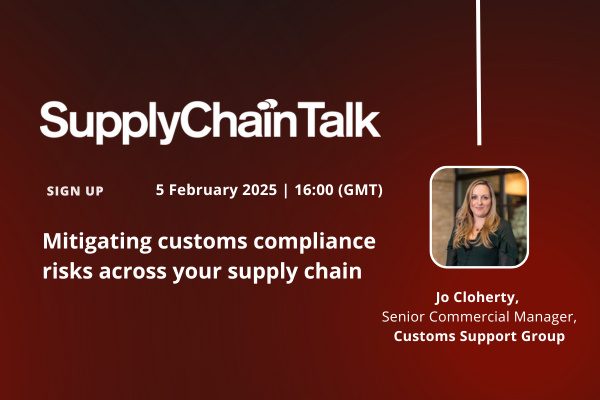Data governance drives business transformation

Lee Biggenden at Nephos Technologies argues that effective data governance is a leadership issue, with the potential to transform businesses
Data Governance is fast becoming one of the most important and wide-ranging organisational priorities across the modern digital economy. For the majority, however, it remains among the most challenging.
Viewed by many as little more than an unavoidable compliance overhead, others see the potential it offers to transform business insight and decision-making.
Whatever the perspective, what most organisations have in common is an inability to define, implement and execute a strategy that goes beyond compliance box-ticking to release the huge latent value of business data.
One of the main reasons for this is that, too often, Data Governance isn’t seen as a leadership issue, even though effective strategies can only evolve when there is advocacy from senior decision-makers. In bridging this gap, there is a range of challenges that organisations must address if their efforts are to succeed.
Bad governance: common challenges and pitfalls
At a fundamental level, many organisations struggle to exercise the appropriate levels of control over their datasets, let alone derive the potential that exists within them to improve processes and performance.
For example, having taken the decision to focus on Data Governance, the most common mistake organisations make is to immediately fixate on outcomes without first addressing the need for effective data discovery and classification.
Business leaders also often assume that technology investment alone offers a guaranteed route to Data Governance success. All too common, however, are the experiences of organisations that see their efforts frustrated by software tools that promise much but deliver relatively little.
Part of the problem is that there is no single tool available that can address the entire spectrum of Data Governance needs. As a result, IT and governance teams have their hands full managing an increasing range of tools as data and technology infrastructure evolves over time.
In addition, as the complexity of infrastructure increases, this resulting data sprawl is one of the biggest issues facing those responsible for governance. In many situations, legacy software tools are at the heart of failed governance projects and are identified as the weak link between objectives and delivery.
Organisations also face the widespread problem of a data governance skills shortage, with a dearth of candidates to choose from. What’s more, few organisations have a management hierarchy in place to support those given responsibility for data governance, let alone effectively integrate it into the wider organisation.
Good governance: getting it right
By addressing each of these issues effectively, Data Governance offers huge potential for improving business performance, but effective leadership is essential for getting the fundamentals right. First and foremost, organisations need to develop or acquire – either via training and reskilling, recruitment or partnership – the skills, knowledge and experience required to effectively implement a Data Governance strategy.
While technology tools play a key role, there is no substitute for the leadership and guidance delivered by experts who have ‘been there and done it’.
In addition, developing effective processes generally benefits from working with organisations that have experience in delivering a Data Governance programme of work.
Without this in place, there remains a significant risk that teams may work with misaligned objectives or get bogged down as they spend time learning how to approach Data Governance rather than actively delivering it and driving value.
And herein lies a key question, often overlooked – what does value look like? In most cases, it is derived from just a couple of core perspectives:
- Cost avoidance through making sure the organisation is not exposed to fines, lost customers and reputational damage as a result of a governance failure.
- Enabling value creation by ensuring data is accessible in a timely manner to allow for analysis, correct data federation, quality control and lineage. Without good governance, it would be difficult to prevent data from becoming obsolete, useless, low quality or becoming an unknown quantity.
In either case, a key rule for leaders looking to initiate a Data Governance project is to look before they leap. Too often, organisations create a general, high-level set of objectives and jump straight into assigning tasks, buying technology tools and looking at short-term requirements.
In addition, projects are often initiated without much thought being given to long-term goals, even though this is crucial to establishing a common sense of purpose and direction.
Without putting these foundations in place, organisations are likely to be setting themselves up for failure. Instead, leaders should take a step back and look at all their requirements and options to build a coherent plan that truly meets their governance – and crucially – their business needs.
Key questions at this stage include:
- Why are you focusing on Data Governance? While many organisations want to focus on compliance and business improvement, very few are in a position to clearly define their objectives from the outset. This is the ideal time to seek independent expert advice
- Can you do the work yourself? Do you have the human and technology resources to deliver on your objectives?
- Even if the expertise and resources are available, organisations must also consider whether they should tackle a complex Data Governance project using in-house resources alone. Is it likely to draw resources away from other important projects, for example?
Getting these priorities aligned from the early stages of a project can have a transformational impact on what it delivers. Without leadership buy-in from the outset, however, organisations will struggle to realise its full benefits.
Lee Biggenden is Co-Founder and COO of Nephos Technologies
Main image courtesy of iStockPhoto.com

Business Reporter Team
Related Articles
Most Viewed
Winston House, 3rd Floor, Units 306-309, 2-4 Dollis Park, London, N3 1HF
23-29 Hendon Lane, London, N3 1RT
020 8349 4363
© 2025, Lyonsdown Limited. Business Reporter® is a registered trademark of Lyonsdown Ltd. VAT registration number: 830519543





